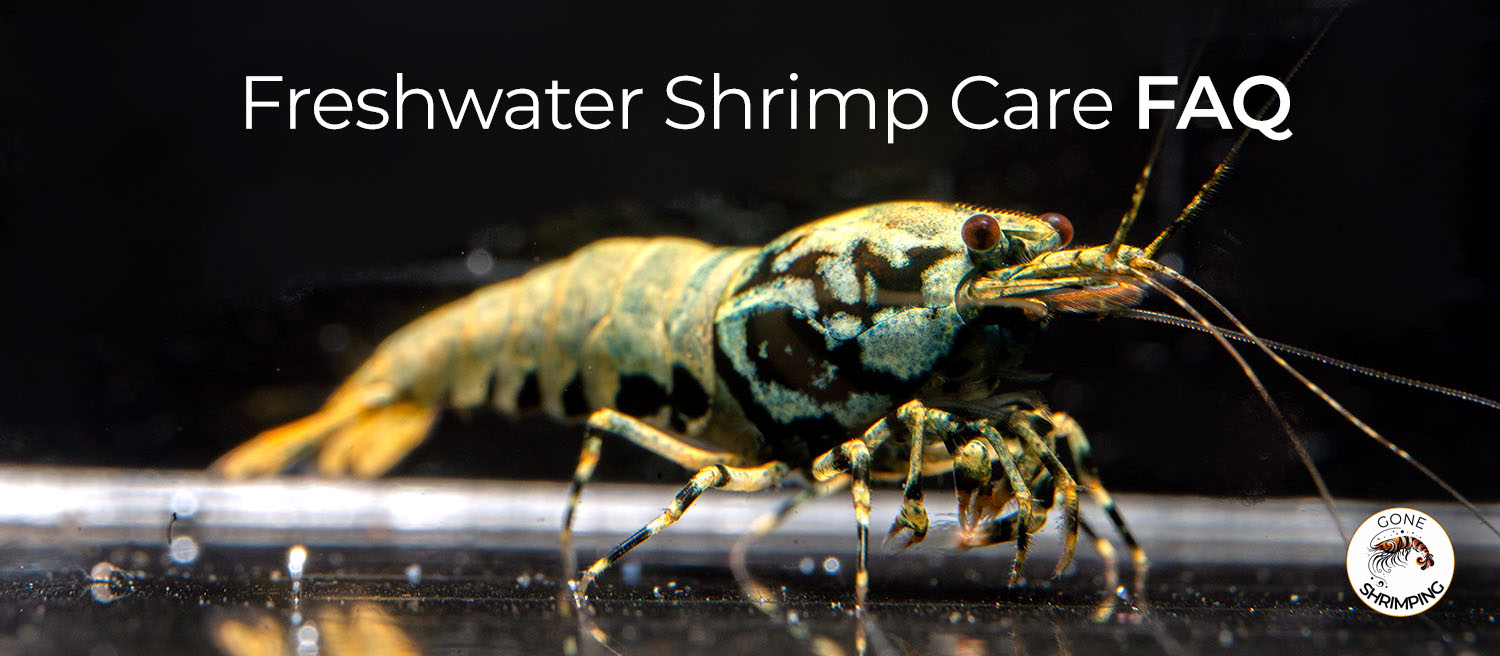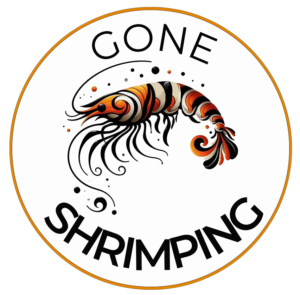Freshwater Shrimp Care: Frequently Asked Questions
Welcome to our Freshwater Shrimp Care FAQ! Whether you’re a beginner or an experienced aquarist, this guide aims to address common questions and provide valuable insights to ensure your shrimp thrive in their aquatic environment.

1. What are the ideal water parameters for freshwater shrimp care?
Maintaining optimal water conditions is crucial for shrimp health:
Caridina
- Temperature: 68°F to 74°F (20°C to 23°C)
- pH: 5-6.5
- General Hardness (GH): 3-5 GH
- Carbonate Hardness (KH): 0 KH
- Total Dissolved Solids: 90-110 TDS
Neocaridina
- Temperature: 68°F to 74°F (20°C to 23°C)
- pH: 6.6 to 7.
- General Hardness (GH): 4-8 GH
- Carbonate Hardness (KH): 0-4 KH
- Total Dissolved Solids: 150-300 TDS
Regular testing ensures these parameters remain stable, promoting a healthy environment for your shrimp.
2. How should I cycle my aquarium before introducing shrimp?
Cycling establishes beneficial bacteria that process harmful waste products. This process typically takes 4 to 6 weeks:
- Set up the tank with substrate, plants, and equipment.
- Introduce an ammonia source, like fish food or pure ammonia.
- Monitor water parameters, observing ammonia spikes followed by nitrite and nitrate.
- Wait until ammonia and nitrite levels are 0 ppm before adding shrimp.
Patience during cycling is essential to prevent stress or loss of shrimp.
3. What should I feed my freshwater shrimp?
Shrimp are omnivores and benefit from a varied diet:
- Commercial Shrimp Pellets: Formulated with essential nutrients.
- Blanched Vegetables: Such as zucchini, spinach, or cucumber.
- Algae Wafers: Supplement natural algae in the tank.
- Protein Sources: Occasional treats like bloodworms.
Ensure uneaten food is removed to maintain water quality for freshwater shrimp care.
4. How often should I perform water changes?
Regular water changes help maintain water quality:
- Frequency: Weekly
- Amount: 10% to 20% of tank volume
Use dechlorinated water matching the tank’s temperature and parameters to avoid shocking the shrimp.
5. Can I keep shrimp with other fish?
Yes, but choose tank mates carefully:
- Suitable Fish: Small, non-aggressive species like neon tetras or rasboras.
- Avoid: Predatory or large fish that may harm shrimp.
Providing ample hiding spaces, such as plants and decorations, helps shrimp feel secure.
6. How do I handle molting issues in shrimp?
Molting is a natural process where shrimp shed their exoskeleton to grow:
- Ensure Proper Nutrition: Provide a balanced diet rich in minerals.
- Maintain Water Quality: Stable parameters support healthy molting.
- Avoid Handling: Shrimp are vulnerable during molting; minimize disturbances.
Leaving molted shells in the tank temporarily allows shrimp to consume them for nutrients.
7. Why are my shrimp dying unexpectedly?
Sudden shrimp deaths can result from:
- Poor Water Quality: Regularly test and maintain parameters.
- Toxins: Avoid using chemicals or contaminated equipment.
- Acclimation Stress: Gradually introduce new shrimp to the tank environment.
Observing shrimp behavior and promptly addressing issues can prevent losses.
8. How do I breed freshwater shrimp successfully?
Breeding requires optimal conditions:
- Stable Environment: Consistent water parameters and temperature.
- Adequate Food: Nutritious diet supports reproduction.
- Hiding Spots: Plants and mosses offer shelter for juveniles.
Separate breeding tanks can increase survival rates of baby shrimp.
9. What substrate is best for shrimp tanks?
Choosing the right substrate depends on shrimp species:
- Inert Substrates: Like sand or gravel, suitable for Neocaridina species.
- Active Substrates: Buffer pH and are ideal for Caridina species requiring softer, more acidic water.
Substrate choice impacts water chemistry and shrimp health.
10. How can I prevent diseases in my shrimp colony?
Preventative measures include:
- Quarantine New Additions: Isolate new shrimp or plants before introducing them.
- Maintain Cleanliness: Regular tank maintenance and water changes.
- Avoid Overcrowding: Provide adequate space to reduce stress and disease transmission.
Early detection and prompt action are vital in managing shrimp health.
11. Are live plants beneficial in shrimp tanks?
Absolutely! Live plants offer numerous benefits:
- Water Quality: Absorb nitrates and provide oxygen.
- Foraging Areas: Surfaces for biofilm growth, a natural food source.
- Shelter: Hiding spots reduce stress and promote natural behaviors.
Plants like Java moss, Anub
Have more questions about how to care for your shrimp? You can contact us here.
